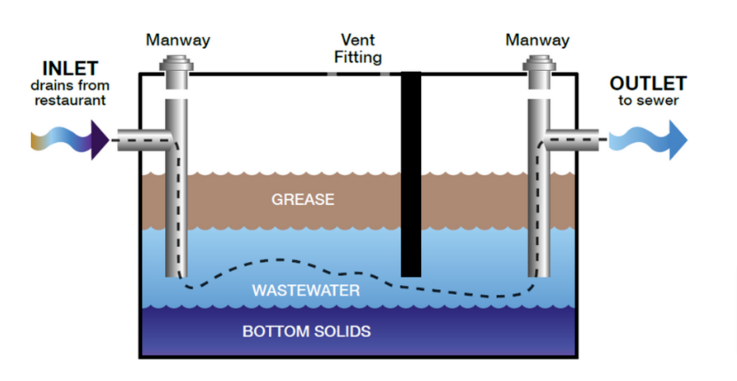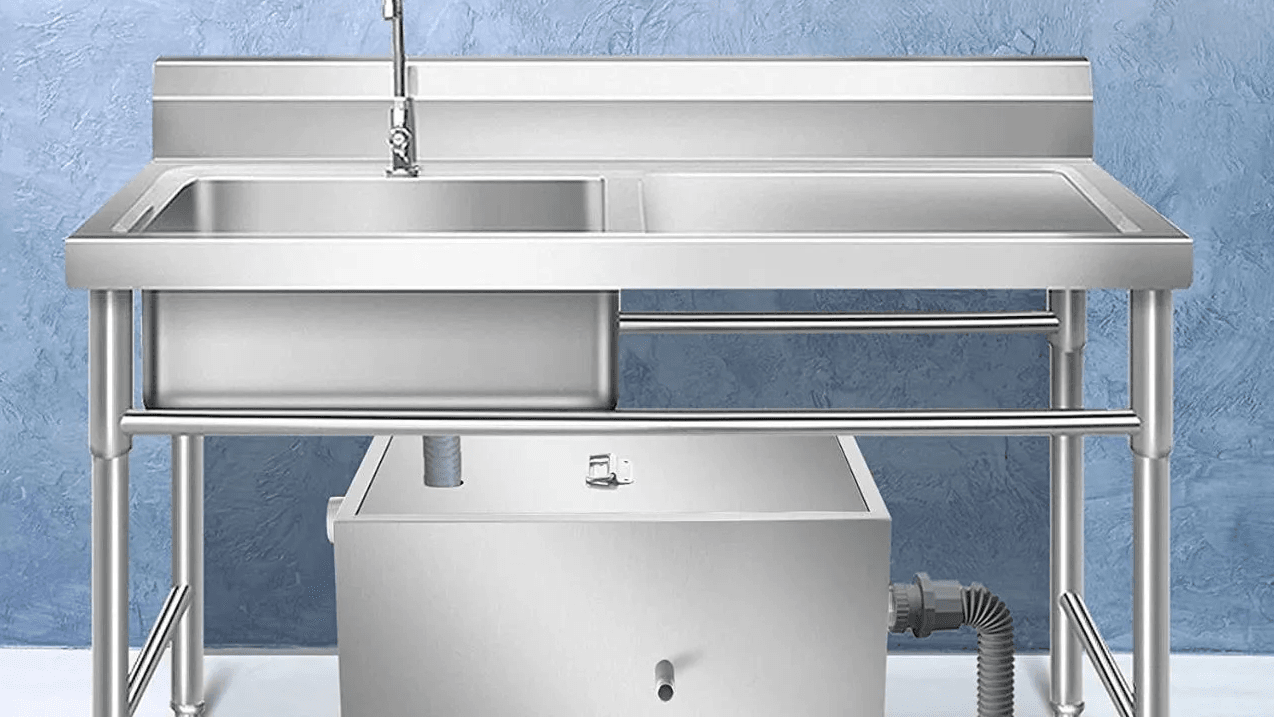A grease trap is an essential part of any commercial kitchen‘s everyday operations. All local jurisdictions mandate it, and no commercial kitchen can work successfully unless it has a functioning grease trap.
A restaurant grease trap serves a purpose that may be unclear to you. Let’s get started by answering some questions about grease traps, how they function, and why they’re such an important feature of commercial kitchens.
What is a Grease Trap?
Let us first define what a grease trap is. A grease trap is a plumbing device that functions as a drain or waste pipe, preventing grease from entering the municipality’s sewer system. Every commercial kitchen makes fats, oils, and greases.
Even while most kitchens make an effort to reduce the quantity of fats, oils, and grease (FOG) that gets washed away through the facility’s drainage systems, keeping all of it from ending up in a drain is impossible.
Fortunately, grease traps exist to catch and intercept FOG before it reaches the main sewer.
What is the Appearance of a Grease Trap?
The substance inside a grease trap consists of wastewater and FOG. But what does the trap actually look like? It comprises of a baffle wall and the primary sewer.

A manhole cover protects the trap, which is usually found in your parking lot or near your business. Grease traps come in a variety of sizes, ranging from small ones designed to connect individual sinks to bigger ones installed to service larger institutions. The size of your firm, production volume, and available space all influence the type of trap you require.
Grease traps are normally placed outside, but smaller interior traps are also available. The design is to keep the FOG material and water apart.
How does a grease trap work?
A grease trap isolates several levels of waste from a restaurant’s water and drainage systems. It cools warm or hot greasy water by letting the fats, oils, and greases cool. A grease trap can separate distinct layers of waste with water because the FOG material rises to the top while the water remains at the bottom with the solid food debris. This occurs because the fog is lighter and less dense than the cooled water.
As a result, a tube inserted below the water’s surface can extract separated water from FOG liquids. Sludge and other non-FOG food waste will quickly settle to the bottom. A crossover pipe separates the two.
Why do I need it?
As previously stated, a grease trap is required by almost all towns for commercial kitchens, therefore you will need to have one installed before you can open for business.
Beyond that, there is a functional requirement. Without a grease trap, FOG will cause further problems for the septic tank or sewage main. It is critical to remember that grease trap material is not the same as used cooking oil, and so should never be dumped in a used cooking oil disposal tank.
As previously said, a grease trap serves as the drainage system for your FOG particles. Without one, you will experience major plumbing problems that will disrupt your everyday operations. It could also result in fines for your town and potentially pose a safety risk to your clients and other members of the community.
How is a Grease Trap Installed?
Unless your commercial kitchen is a new facility, your building is likely to already have a grease trap, so you don’t need to worry about having one installed.
However, if you are building a new home, you should hire a professional plumbing service or grease trap maintenance provider to install the trap.
They’ll tell you where the trap should go and how big it should be, as well as how to meet any grease trap restrictions set by your town.
How do you take care of a restaurant grease trap?
The grease trap, like any other piece of equipment in a commercial kitchen, must be properly maintained to minimize clogs, backups, and other concerns. Your grease trap should be professionally drained and cleaned on a regular basis. The frequency of grease trap cleaning is determined by several parameters, including size, flow, and amount of use. Your service provider should create a regular maintenance schedule based on these considerations.
If your company does not currently have a grease trap in place, you must act fast to avoid stalling your kitchen’s progress.








